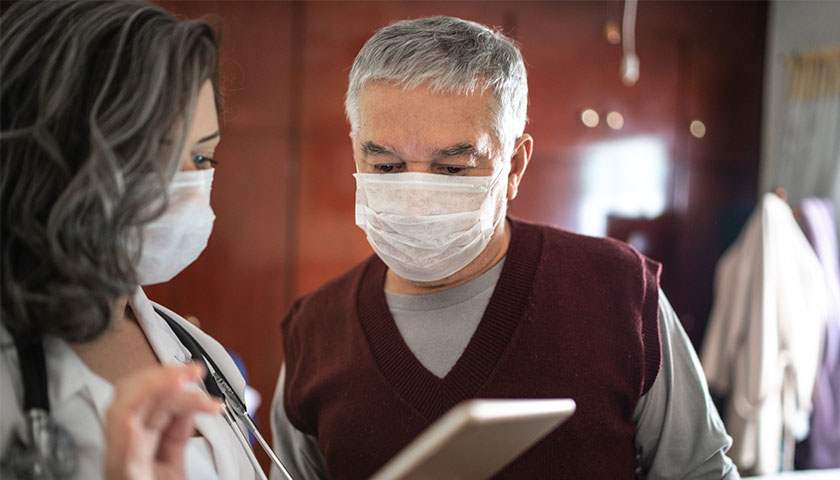The Doctor Will See You Now

The number of virtual interactions between clinicians and patients has increased during the pandemic.
Daniel Kavanaugh, MBA/Health Management ’14, has compressed two years of planning into about eight weeks.
As the program director of virtual care at Brigham and Women's Hospital in Boston, Kavanaugh is in charge of implementing telehealth, which enables clinicians to see patients virtually.
Clinicians had been using telehealth to a degree before the pandemic hit, but COVID-19 put everything into overdrive. Suddenly it wasn’t about talking to a primary care provider about minor issues: Telehealth was going to be essential in reducing risk and savings lives.
“It became very clear early on that we needed ways to reduce the amount of in-and-out time for our clinicians on the units,” says Kavanaugh. “How do we find a way to use telehealth to replace some of that physical presence in a patient’s room?”
One way was to set up an iPad next to each patient’s bed and use it as a virtual intercom. When the situation allows providers to consult with that patient online, they can now make contact via the screen, thus reducing traffic on the unit and conserving personal protective equipment.
It’s become the new normal very quickly. Before the pandemic hit, Brigham clinicians had about 16 virtual encounters a day; by late March, it was over 2,000 a day. And that trend toward ubiquity isn’t going away, even as the pandemic recedes.
“I do think it’s sustainable to have a mix of in-person care and virtual care,” says Kavanaugh. “If we look at all our ambulatory clinics and how much virtual care we’re doing on a daily basis, why can’t we keep that in a virtual space?”
What it does is free up providers to focus on in-person care for things like vaccines or physical exams. Moving to virtual also saves time and costs less. And patients are overwhelmingly positive about virtual care, according to Kavanaugh. Which means that, in one form or another, telehealth is here to stay.
“We’ll never go back the current state we had on, say, January first,” says Kavanaugh. “The momentum will continue moving in a way that allows us to offer more virtual care at the Brigham.”
Contact
Greg Gatlin
Office of Public Affairs
617-573-8428
Ben Hall
Office of Public Affairs
617-573-8092



